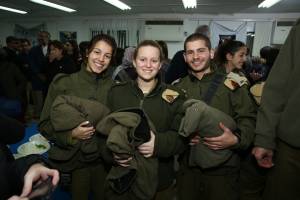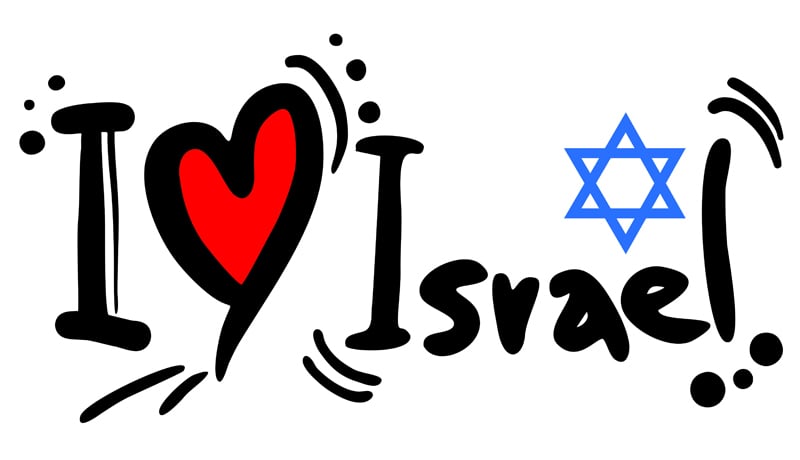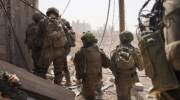Does the menorah depicted on the Arch of Titus resemble that which stood in the Holy Temple of Jerusalem?
Chanuka is a perfect time to learn more about the menorah. The menorah, a seven-branched candelabrum (as opposed to the nine-branched candelabrum, or chanukiah, lit on Chanukah), is certainly the one item from the Beit Hamikdash (Holy Temple) most embedded in our collective memory and identity. This is due in no small part to the menorah serving as the emblem of the State of Israel. In fact, it was the menorah that was the first symbol to ever represent the Jewish people. The Magen David (Star of David) was not used for this purpose until quite some time later.
The current design of the menorah, as we know it, was adapted from that which appears on the Arch of Titus. The Arch of Titus was erected to immortalize the Roman victory over the Jews and their conquering of Jerusalem and the Land of Israel. In an effort to further humiliate the Jews, the Arch of Titus also depicts a number of other vessels looted from the Holy Temple.
Varying Scholarly Opinions
It is unclear, however, whether the menorah depicted on the Arch of Titus is how the menorah looked in the Holy Temple. Although the Talmud does give the measurements and general design of the menorah, it cannot be known for sure how the menorah actually appeared. In fact, there are opinions within the Talmud that the menorah’s lights were not even positioned in a straight line, as is commonly believed. Some say that its branches were arranged in a circle, which was intended to resemble a crown. It is also somewhat certain that the menorah stood on three legs, and not on a solid block base, as depicted on the Arch of Titus.
Furthermore, most people assume that the menorah had curved branches facing upward, which protruded from the center stem of the menora. This shape is referred to as an “upside-down rainbow.” Although this is indeed the view of a number of authorities, the Rambam (Maimonides), one of the most influential Torah scholars as well as a brillliant philospher and medical practitioner in the Middle Ages, is noted for illustrating the branches as extending diagonally upward from the center stem at a 45-degree angle. The idea of diagonal branches is supported by no less an authority than Rabbi Shlomo Yitzhaki, known by the acronym Rashi (1040-1105), the most renowned commentator on the Torah and Talmud. Nevertheless, virtually all ancient drawings and paintings of the menorha depict it with rounded branches. Even coins uncovered from the biblical and Talmudic era depict the menorah with rounded branches, as do all the mosaics and ossuary markings. Furthermore, the Rambam himself writes that his drawings are for illustrative purposes only and are not necessarily to be taken literally. It is difficult to determine, however, which aspects of the Rambam’s illustrations are literal and which are illustrative.
Construction of Replica of Temple Menorah Forbidden
It is actually forbidden to construct a replica of the Menorah of the Beit Hamikdash. Indeed, we may not replicate any of the vessels that were used in the Mishkan (Tabernacle) and the Beit Hamikdash. Some authorities are of the opinion that it is only forbidden to make an exact replica of the vessels of the Beit Hamikdash. It would be permissible, however, if one were to incorporate a slight change in the design. Some authorities forbid the construction of any type of seven-branched candelabra whatsoever, although halacha (Jewish law) is not in accordance with this view.
A menorah that would be disqualified for use in the Beit Hamikdash – such as one made of plastic or wood – may be constructed. So, too, some permit making a seven-branched menorah if the center stem is not intended to hold a candle or oil, but instead made into an artistic design. My rabbi and friend, Rabbi Shlomo Leib Mund of Beit Shemesh, suggests that a menorah that does not hold the minimum quantity of oil that was used in the menorah of the Beit Hamikdash, namely half a log (about 150 ml), may be enough of a change to permit constructing one, even if it resembles the menorah of the Beit Hamikdash in every other way.
By: Rabbi Ari Enkin, Rabbinic Director, United with Israel
Bring Joy to Israeli Soldiers - Send Winter Care Packages!
We are honored to thank the young men and women of the IDF who risk their lives every day to defend the citizens of Israel.
Join us in sending winter care packages and personal notes of support to Israeli soldiers who are out in the cold all day.
Warm up a soldier's heart with essential winter wear including fleece jackets, hats, gloves and more. Keep an entire unit warm!
THE SOLDIERS REALLY APPRECIATE YOUR LOVE AND CONCERN!
Click Here to Send Your Gift and Personal Note to Israeli Soldiers
Do You Love Israel? Make a Donation - Show Your Support!
Donate to vital charities that help protect Israeli citizens and inspire millions around the world to support Israel too!
Now more than ever, Israel needs your help to fight and win the war -- including on the battlefield of public opinion.
Antisemitism, anti-Israel bias and boycotts are out of control. Israel's enemies are inciting terror and violence against innocent Israelis and Jews around the world. Help us fight back!























